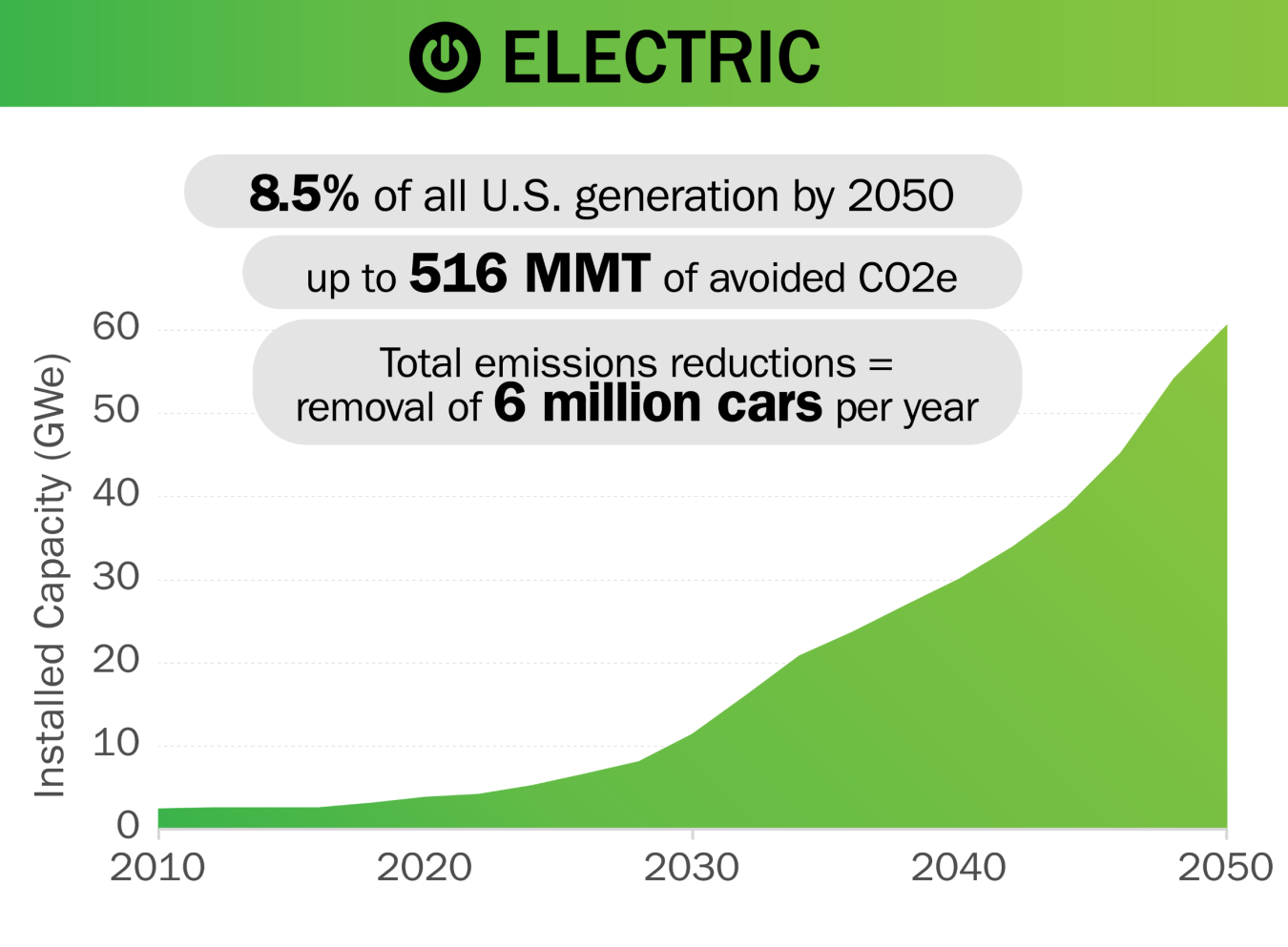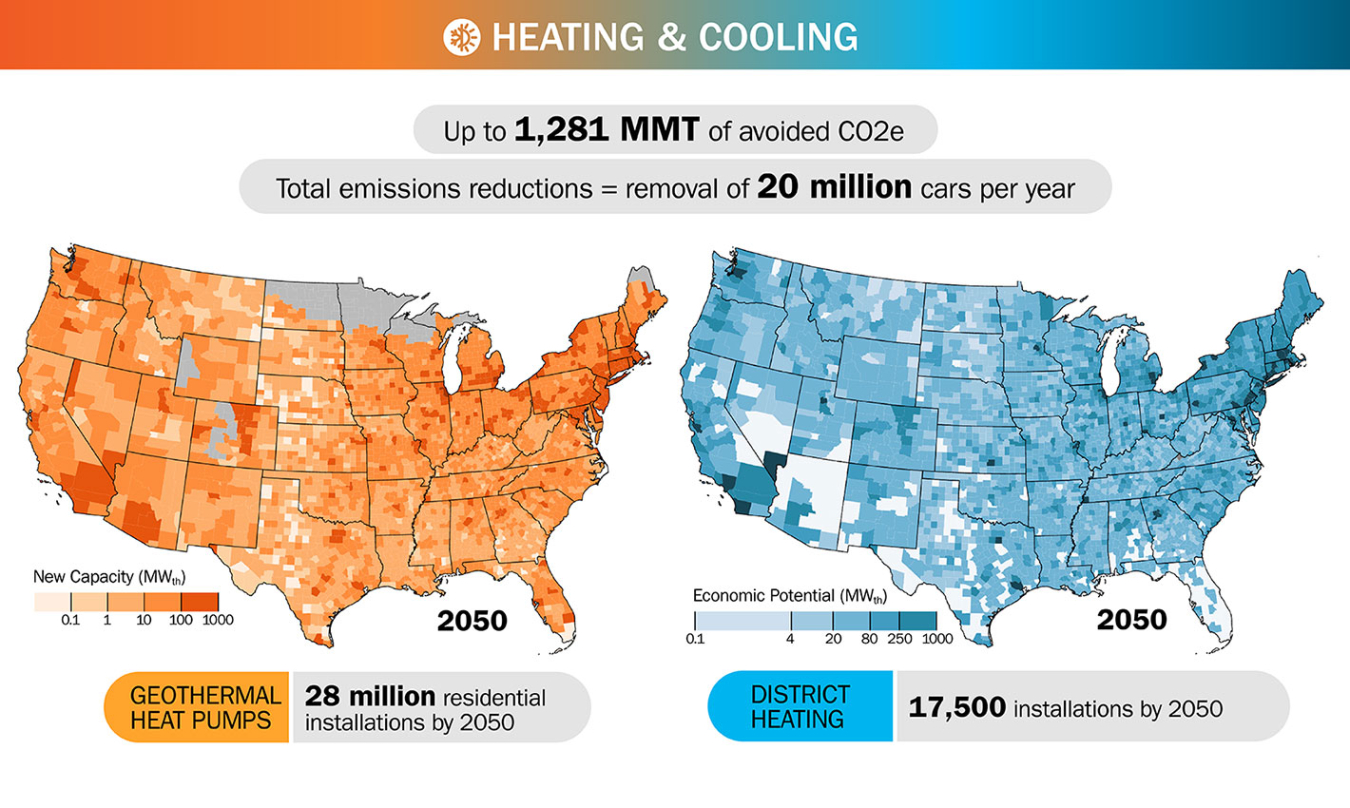
There is enormous untapped potential for geothermal. It is a renewable and diverse energy solution for the United States—providing firm and flexible electricity generation and delivering unique technology solutions for America's heating and cooling demands. Geothermal resources can be found nationwide, are "always on," and represent vast domestic energy potential. Only a fraction of this potential has been realized, however, because of technical and non-technical barriers that constrain industry growth.
To evaluate the potential for geothermal energy to contribute to America’s energy future, the Geothermal Technologies Office (GTO) initiated the GeoVision: Harnessing the Heat Beneath Our Feet (2019) analysis—a detailed research effort to explore opportunities for increased geothermal deployment and the pathways necessary to overcome technical and non-technical barriers to such deployment.
The GeoVision analysis uses rigorous quantitative models to assess geothermal deployment potential under scenarios that consider a range of technologies, market conditions, and barriers. It evaluates opportunities for successful geothermal deployment based on three key objectives:
- Increasing access to geothermal resources
- Reducing costs and improving economics for geothermal projects
- Improving education and outreach about geothermal energy.
The Potential in Geothermal Deployment
The GeoVision analysis determines that achieving all three key objectives and improving the tools, technologies, and methodologies used to explore, discover, access, and manage geothermal resources can:
- Reduce risks and costs for geothermal developers
- Increase growth potential for geothermal energy
- Facilitate access to previously untapped sources of geothermal energy
- Provide the United States with secure, flexible energy that offers economic benefits to the geothermal industry and energy consumers nationwide.
Learn More:
The GeoVision analysis projects that, through technology improvements, geothermal electricity generation capacity has the potential to increase to more than 26 times current deployment. This would increase geothermal electricity generation capacity to 60 gigawatts (GW) by 2050—providing 8.5% of all U.S. electricity generation. The analysis also finds that instituting regulatory reforms that optimize permitting timelines alone can double geothermal capacity by 2050.
In the non-electricity sector, the analysis identifies market potential for geothermal heat pumps equivalent to supplying heating and cooling solutions to 28 million households and economic potential for 17,500 geothermal district heating systems nationwide.
In 2023, GTO released the Enhanced Geothermal Shot™ analysis, which built on the GeoVision analysis to update electricity-generating capacity potential, based on technology advances and updated estimates of EGS resource potential. Findings indicate that the total amount of installed domestic geothermal capacity could go beyond what the GeoVision analysis originally projected—reaching 90 GW by 2050.
Explore the GeoVision Analysis
- Full GeoVision Analysis
- Executive Summary
- Chapter 1: Developing the GeoVision
- Chapter 2: What is Geothermal Energy?
- Chapter 3: GeoVision Analysis: Models and Scenarios
- Chapter 4: GeoVision Analysis: Results, Opportunities, and Impacts
- Chapter 5: The GeoVision Roadmap: A Pathway Forward
- References and Appendices
- GeoVision Analysis Supporting Task Force Reports:
- GeoVision Data
Have questions? Email [email protected] for help.



